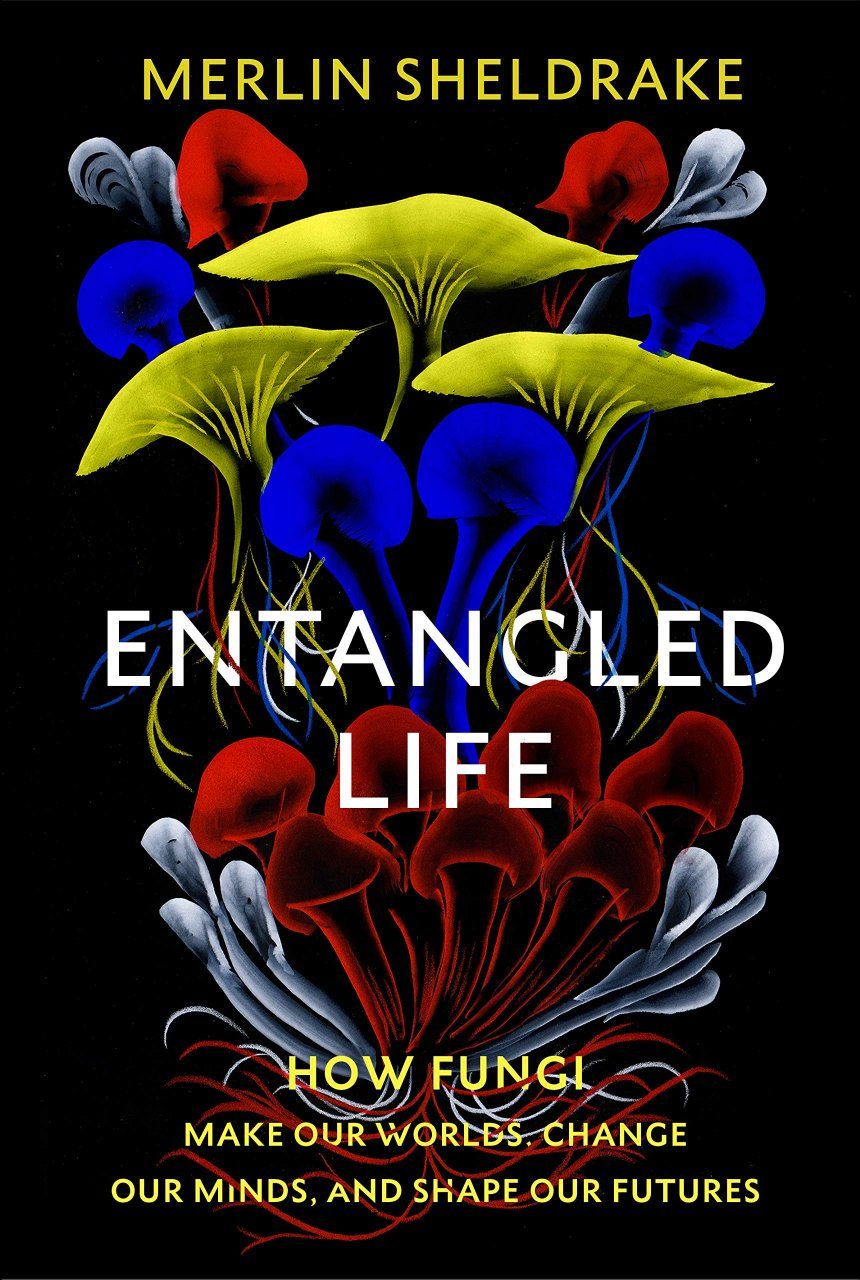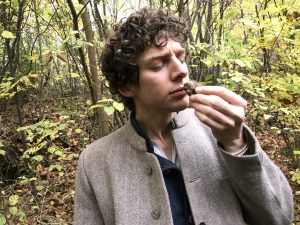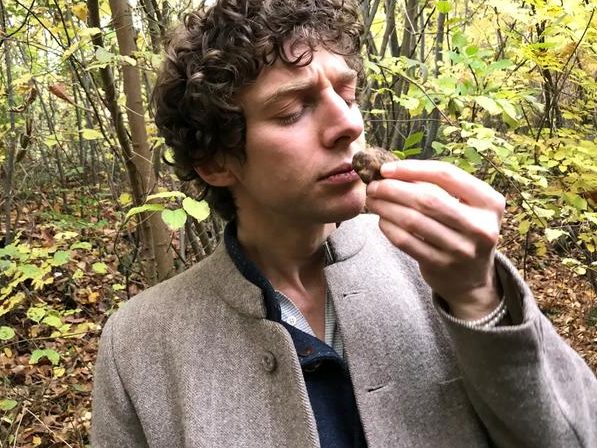 Merlin Sheldrake is a biologist and a writer with a background in plant sciences, microbiology and ecology. He received a Ph.D. in tropical ecology from Cambridge University for his work on underground fungal networks in tropical forests in Panama.
Merlin Sheldrake is a biologist and a writer with a background in plant sciences, microbiology and ecology. He received a Ph.D. in tropical ecology from Cambridge University for his work on underground fungal networks in tropical forests in Panama.
Merlin’s just published book, Entangled Life explores the incredible world of fungi and how it has shaped and continues to influence the world we live in

Merlin kindly agreed to answer our questions about his book and these incredible organisms.
Could you tell us a little about your background?
As an undergraduate I studied plant and microbial sciences. I then moved over into the humanities for my masters degree in the history and philosophy of science, where I focused on the history of Amazonian ethnobotany – the study of the relationships between humans and plants. I then shifted back into the sciences for my PhD, conducting research into the ecology of mycorrhizal fungi in tropical forests in Panama. There’s a strange disciplinary barrier between the sciences and the humanities which I’ve long found frustrating – and artificial – and for much of my education I’ve tried to find the places where it is less well-maintained and has become more porous.
Where did the motivation for this book come from?
Mycorrhizal fungi form symbiotic relationships with plants and can link plants together in shared networks sometimes known as the ‘wood wide web’. These fungi allowed the ancestors of plants to move out of freshwater and onto land, some 500 million years ago, and without them the planet would be unrecognisable. At school I had been taught to think of plants as autonomous individuals, but they turned out to be the product of a complex tangle of relationships: mycorrhizal fungi are a more ancient part of planthood than wood, leaves, flowers, or even roots. What we call plants are really algae that have evolved to farm fungi, and fungi that have evolved to farm algae – and this ancient relationship lies at the base of the food chains that sustain nearly all life on land. The more I studied these organisms and their intimate relationships, the more I realised that thinking about fungi makes the world look different. Entangled Life arose from this enquiry, and my sense of vertigo at the realisation that we’re only just beginning to understand this mind-bending kingdom of life.
Fungi appear to make decisions but has no ‘mind’ in the way we would understand. How can you best explain how ‘mycelial minds’ make sense of their environment?
Mushrooms are only the fruiting bodies of fungi: for the most part fungi live their lives as branching, fusing networks of tubular cells known as mycelium. Mycelial co-ordination is difficult to understand because there is no centre of control. If we cut off our head or stop our heart, we’re finished. A mycelial network has no head and no brain. Fungi, like plants, are decentralised organisms. Control is dispersed: mycelial co-ordination takes place both everywhere at once and nowhere in particular. These networks can sprawl over tens or even hundreds of metres and are subject to an unceasing flood of sensory information. And somehow, without a brain, fungi are able to integrate these many data streams, make decisions, and determine suitable courses of action. How they coordinate themselves remains a puzzle. There are a few options. Some researchers suggest that mycelial networks might transmit developmental cues using changes in pressure or flow – because mycelium is a continuous hydraulic network like a car’s braking system, a sudden change in pressure in one part could, in principle, be felt rapidly everywhere else. Some have observed that metabolic activity – such as the accumulation and release of compounds within hyphal compartments – can take place in regular pulses that could help to synchronise behaviour across a network. Others have found that the mycelium of some fungal species is electrically excitable and conducts spikes of electrical activity along hyphae, analogous to the electrical impulses in animal nerve cells, which could allow different parts of a network to stay in touch with themselves.
A common or shared mycorrhizal network seems to be a model for all ecology, yet outside of a few specialists is relatively under-researched and tends to be plant-centrist; why do you think is that is the case?
If you show someone a picture of a forest containing a jaguar and ask people to describe the image, most would describe the jaguar and say nothing about the bustle of plant life that makes up most of the scene. Our tendency to overlook plants in favour of animals has been termed ‘plant-blindness’. I think a similar phenomenon – fungus-blindness – sometimes plays out when we think about shared mycorrhizal networks. Plants are larger and easier for us to see and so our attention is naturally drawn to them. Plants are also more familiar units of life, which makes it easier for us to tell stories featuring them. Fungal networks are intuitively and conceptually slippery, and more difficult for us to make sense of.
Mycroremediation; the use of fungi to restore the biological health of soil has long been understood, but rarely used in large-scale applications. Do you think that will change in the future?
I hope so! Fungi are metabolic wizards with astonishing talents for breaking down stubborn substances, from lignin, wood’s toughest component, to rock, crude oil, polyurethane plastics and the explosive TNT. Despite its promise, however, mycoremediation is no simple fix. Just because a given fungal strain behaves in a certain way in a dish doesn’t mean it will do the same thing when introduced to the rumpus of a contaminated ecosystem. Fungi have needs – such as oxygen or additional food sources – that must be taken into account. Moreover, decomposition takes place in stages, achieved by a succession of fungi and bacteria, each able to pick up where the previous ones left off. It is naive to imagine that a lab-trained fungal strain will be able to hustle effectively in a new environment and remediate a site by itself. Some of the most promising applications of mycoremediation under development involve redirecting our waste streams so that material can be processed in fungal facilities before it hits the landfill. These approaches strike me as the most promising because they involve a larger scale re-evaluation of our dysfunctional philosophy of waste. By building systems in which fungi intercept pollutants before they spill into the environment we can start to deal with the causes of pollution rather than just the symptoms.
Some radical mycologists declare that ‘fungi can save the world!’ How credible do you think some of their claims are?
Fungi have been shaping the planet and its biospheres for over a billion years and will no doubt continue to do so. And there are certainly many ways that we might partner with fungi to help us to adapt to life on a damaged planet. As in any field that holds great promise there’s hype and some big claims floating around, some more credible than others. Then again, we don’t know nearly enough about fungi as we should. Their lives are endlessly surprising, and even many of their well-established behaviours and characteristics can seem incredible at first hearing.
Entangled Life has taken years of research and investigation. Allowing for a well-earned rest, have you any future projects you can tell us about?
I have plenty of studies to write up, and a number of research questions I’m exploring. I have yet to emerge from this tangled enquiry and don’t imagine that I will any time soon. Fungi have received a tiny fraction of the attention given to animals or plants and there are wide open questions whichever way one looks.
 Entangled Life: How Fungi Make Our Worlds, Change Our Minds and Shape Our Futures
Entangled Life: How Fungi Make Our Worlds, Change Our Minds and Shape Our Futures
By: Merlin Sheldrake
Hardback | September 2020
An immersive trip into the largely unknown world of fungi, showing just how otherworldly and amazing this neglected group of organisms is.

